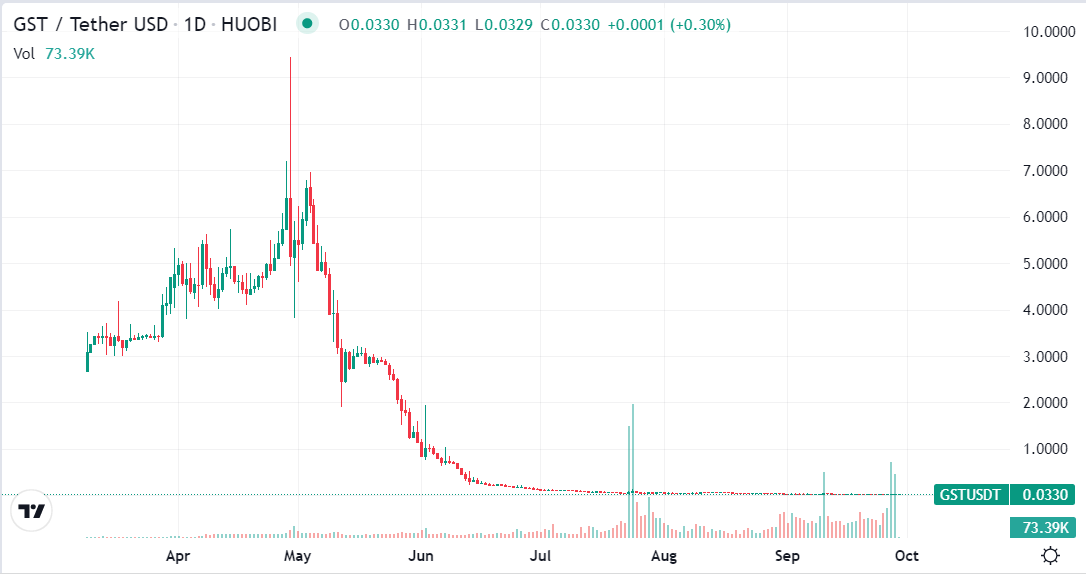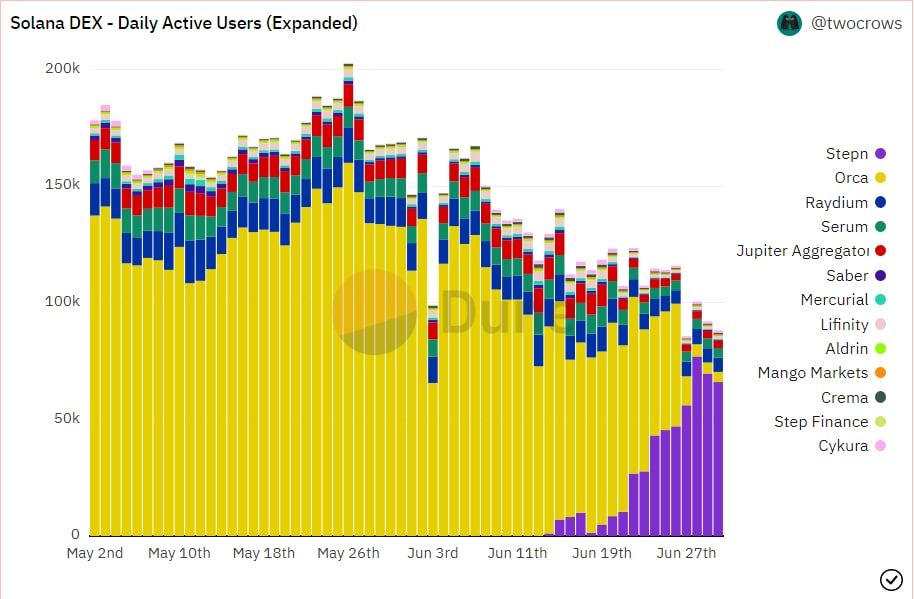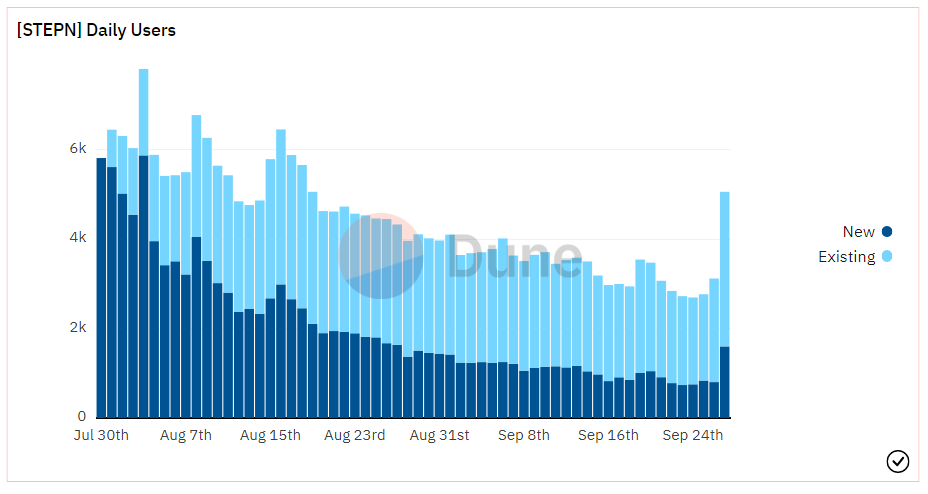StepN is the leading and largest project in the Move-to-Earn trend. Used to outperformed the market in the period of March and April and reached the capitalization of $2.5 billion. However, after a while, StepN now seems to have become a "dead project" when the main token is GMT divided by 6 from ATH, and GST has lost 99.99% of its value.

Cause of failure
The project is a pioneer in developing a very good model, helping users both exercise and earn money. However, in essence, StepN's model is no different from Play-to-Earn and other XXX-to-Earn types. All require users to pay an initial fee, then earn tokens to pay back the capital. With StepN, GMT is the governance token and GST is the earning token.
When the price of GST increases, many people will FOMO paying fees (SOL/ GMT/GST) to buy shoes and participate in running ➡ more GST is released into the market. Old people dump GST, new people buy in, but also dump eventually. In essence, this is a Ponzi scheme that takes money from the former and pays the latter. Then at some point the amount of GST is too much, the market can't absorb it anymore ➡ the whole model will collapse.
Trying hard to revive

It can now be seen that StepN has collapsed almost completely, reflected in both the token price and the decline in the number of users. However, the team building the project seems to be very active, they are constantly improving and releasing innovations to revive this dead trend. The most notable recent efforts are:
Launching DEX DOOAR
Last June, StepN launched its own DEX on its app. In the early stages, this DEX helps users to swap conveniently in-app. However, in the next stages, DOOAR will allow users to provide liquidity for GST/GMT and towards the goal of multichain swap.
A rather ambitious goal for a running Dapp, but surprisingly, only 10 days after launch. DOOAR has surpassed Orca and become the DEX with the most users on Solana, accounting for 75% of the market share.

Continuously burn $GMT
In Q2/2022 StepN got $122.5 million from its platform fees, an impressive profit in the midst of downtrend. The project planned to spend 5% of profits – more than 6 million USD to buy and burn GMT tokens. At that time, price was about $0.87/GMT, means more than 7 million GMT was estimated to have been burned. This is equivalent to 2% of the current total supply.
This was not the first time StepN had used profits to buy back tokens, in April the project also announced using $26 million to burn GMT. Up to date, StepN has burned about 216 million GMT and will continue to burn GMT in the following quarters.
Added HP mechanism for Sneaker
On July 22, the project announced the addition of a lifespan (HP) mechanism for Sneakers. That means the sneaker will "die" after a period of use. At that time, the user has 3 choices:
👉 Remove shoes ➡ Reduce the supply of sneakers – the same way, reduce the supply of GST.
👉 Revive HP for shoes with GMT/GST ➡ increase demand for GST.
👉 Upgrade 5-1 (Combine 5 shoes to become 1 better shoe) ➡Reduce sneaker supply.
This mechanism in the long run will help the game reduce inflation and bring value to GST. But that doesn't seem to be enough to make the market feel attractive. Because after many great improvements, StepN's performance is still going downhill. The key is still to have demand to increase GST price to attract users, from which there is a possibility of recovery. So StepN is taking the latest innovation:
Allow Earning GMT – The governance token
On September 27, the project announced a new mechanism that allows users to earn GMT from running. “If GST can't be pumped back, then use GMT as bait” The StepN team must have thought so. Compared to GST, GMT is clearly a more attractive choice because:
👉 Limited supply of GMT – GST has an unlimited supply.
👉 GMT is not minted to be dumped like GST.
👉 GMT is used to as fees and burnt a lot in StepN's model (level up, shoe lift, heal, ...).
So the ability to attract users is high, data from Dune shows that the number of StepN users on September 27 has increased dramatically. In details of the new mechanism, users can start earning GMT after reaching Lv30. The amount of GMT will be divided into 4 different pools with 4 corresponding sneakers, the better sneakers, the easier it will be to earn GMT. Details of the mechanism can be found here.

Personal opinion
As can be seen, the above mechanism is quite smart to both attract users and prevent GMT from being dumped indiscriminately. Because you have to reach a certain Level and have a good Sneaker to be able to earn GMT ➡ Before that, you have to run alot ➡ Attract both users and demand for GST. This will be a positive factor for StepN in the short term. However, there are 2 weaknesses that will make it difficult for StepN to bounce back:
👉 GMT has fallen sharply from the peak, and is no longer attractive to investors. So even though it is worth more than GST, it is still not attractive enough for users.
👉 StepN's core failure factor is that the Ponzi scheme still exists. Now it's even worse to turn GMT into a dumping token.
These things make me still consider StepN negatively in the long term. Investors should not participate in StepN or FOMO for the project's tokens anymore.


